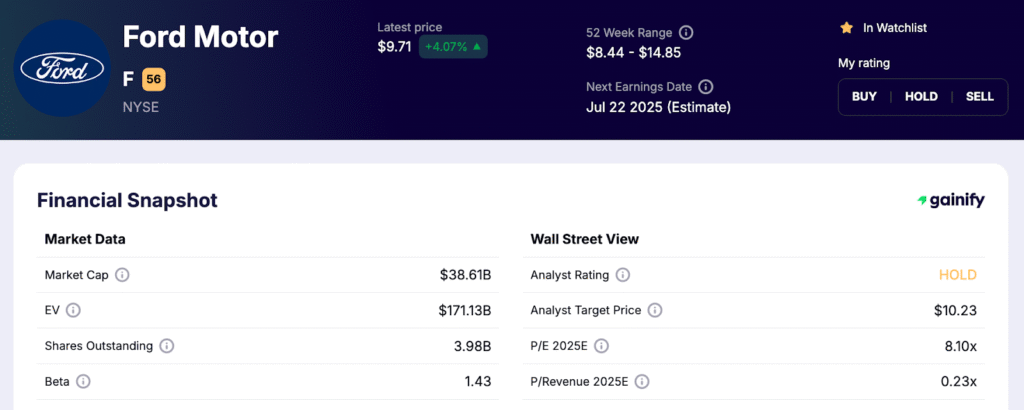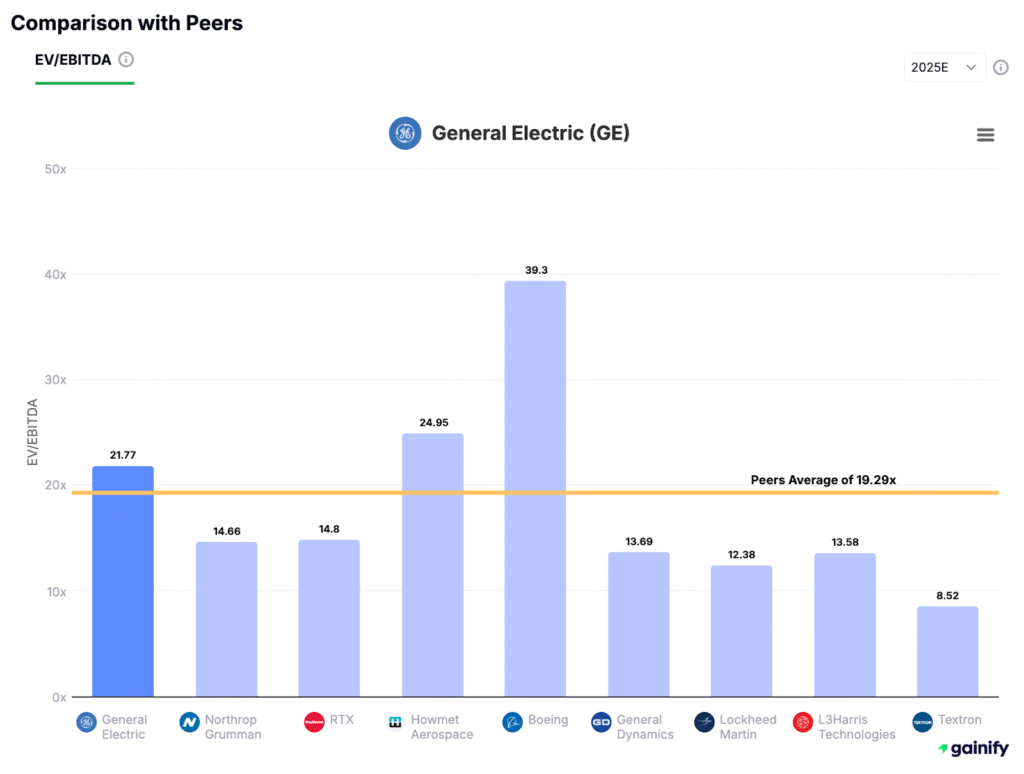Enterprise Value (EV) is a key financial metric used by investors, analysts, and corporate executives to assess a company’s total value.
Unlike market capitalization, which only accounts for equity value, Enterprise Value takes into account the entire capital structure of a business, including debt and cash. This makes EV one of the most comprehensive valuation tools in corporate finance.
In this article, we’ll break down what Enterprise Value is, how it’s calculated, why it’s important, and how it’s used in financial analysis and investment decisions.
What Is Enterprise Value?
Enterprise Value represents the total value of a company as if it were to be acquired.
It includes the value of equity, debt, minority interest, and preferred shares, minus cash and cash equivalents, representing readily available liquid assets.
Think of EV as the theoretical takeover price of the entire company, not only its equity— what a buyer would need to pay to buy a company outright.
Enterprise Value Formula:

Components of Enterprise Value Calculation:
- Market Capitalization: The total value of a public company’s outstanding common shares (Current Share Price × Outstanding Shares).
- Total Debt: Includes both short-term and long-term interest-bearing liabilities, such as loans, bonds, leases and other outstanding debt elements.
- Preferred Equity: Represents preferred shares that pay fixed dividends and have priority over common stock in liquidation.
- Minority Interest: The portion of subsidiaries not owned by the parent company but included in consolidated financials.
- Cash and Cash Equivalents: Highly liquid assets like cash reserves, bank deposits, and short-term investments, subtracted because they reduce the net cost to acquire the business.
Why Enterprise Value Matters
✅ More Comprehensive Than Market Cap
While market capitalization reflects only the value of a company’s equity, it overlooks crucial elements like debt and cash reserves. Enterprise Value delivers a fuller picture by accounting for all sources of capital, making it especially useful for analyzing companies with significant leverage or large cash holdings.

✅ Enables Better Comparisons Across Companies
EV levels the playing field when comparing companies with different capital structures. Two companies might have similar market caps, but if one is heavily indebted and the other is debt-free, their Enterprise Values — and investment risk profiles — will differ significantly.
✅ Foundation for Key Valuation Multiples
Enterprise Value is the cornerstone of several essential valuation ratios used in financial analysis, investment banking, and M&A:
- EV/EBITDA – Evaluates a company’s value relative to its core operating performance, excluding non-cash expenses and capital structure.
- EV/EBIT – Measures value against operating income, helpful when depreciation or amortization skews EBITDA.
- EV/Revenue – Useful for early-stage, high-growth, or unprofitable companies where earnings metrics may not yet apply.
These multiples help investors and analysts assess a company’s performance, profitability, and valuation in a capital structure-neutral way.
How Is Enterprise Value Used?
Understanding enterprise value (EV) is critical across various areas of finance and investing. Here’s how professionals and companies apply it:
1. Investment Analysis
Who uses it: Institutional investors, portfolio managers, equity analysts, retail investors
How it’s used: EV is a key input for valuation multiples such as EV/EBITDA, EV/EBIT, and EV/Revenue. These metrics help investors determine whether a stock is overvalued or undervalued relative to its peers or the broader market.
Example: General Electric (GE) vs. Peers (2025E EV/EBITDA)
Looking at the 2025 estimated EV/EBITDA multiples:
- GE trades at 21.77x, above the peer group average of 19.29x.
- Peers such as Northrop Grumman (14.66x), RTX (14.80x), and General Dynamics (13.69x) trade at significantly lower multiples.
- Boeing, on the other hand, trades at a much higher 39.3x, indicating a premium valuation.
This tells us that GE may be slightly overvalued relative to its peer average but still far below Boeing’s premium. Therefore, investors need to dig deeper — does GE deserve this valuation based on growth prospects, margins, or strategic positioning?

2. Mergers & Acquisitions (M&A)
Who uses it: Investment bankers, corporate development teams, private equity firms
How it’s used: In M&A, Enterprise Value is often the starting point for determining how much a company is worth. Buyers typically apply a valuation multiple — such as EV/EBITDA — to the target’s financials to arrive at an estimated EV. Once the EV is established, analysts work backwards to calculate the equity value, which reflects what the buyer would actually pay to shareholders.
Example: Let’s say an acquirer values a target at 10x EBITDA for a company, and the target is generating $250M EBITDA.
- Enterprise Value = 10 × $250M = $2.5B
- Debt = $400M
- Cash and other most liquid assets = $100M
- Equity Value = EV – Net Debt = $2.5B – ($400M – $100M) = $2.2B
In this case, $2.2B is what the acquirer would offer to shareholders. The EV represents the total valuation of the business; the equity value reflects the price shareholders receive after accounting for the company’s financial obligations.
3. Financial Modeling
Who uses it: Analysts, investment bankers, private equity professionals
How it’s used: Enterprise Value is a core component of discounted cash flow (DCF) analysis and leveraged buyout (LBO) models — two of the most widely used valuation techniques.
- In a DCF model, you project a company’s free cash flows and discount them back to present value. The result is its Enterprise Value, from which equity value is derived.
- In an LBO model, you forecast EV under different debt structures to estimate internal rates of return (IRR) for private equity sponsors.
Enterprise Value vs. Equity Value: Key Differences Explained
When analyzing a company’s valuation, two terms frequently come up: Enterprise Value (EV) and Equity Value. While they are related, they serve different purposes and provide distinct perspectives on a business’s worth.
🔍 Side-by-Side Comparison
Feature | Enterprise Value (EV) | Equity Value (Market Cap) |
Includes Debt | ✅ Yes – Includes both short-term and long-term debt | ❌ No – Debt is not included |
Includes Cash | ❌ No – Cash and cash equivalents are subtracted | ✅ Yes – Cash remains part of shareholders’ assets |
Includes Preferred Equity | ✅ Yes – Treated as a senior claim similar to debt | ❌ No – Preferred equity is not part of common shareholder equity |
Includes Minority Interest | ✅ Yes – Added to reflect total value of consolidated subsidiaries not wholly owned | ❌ No – Excludes value attributable to minority shareholders |
Focus | Total firm value (debt + equity + other claims – cash) | Shareholder value (ownership of common equity only) |
Basis for Valuation Multiples | ✅ Yes – Used in EV/EBITDA, EV/EBIT, EV/Revenue, etc. | ❌ Rarely – Market cap-based multiples (e.g., P/E) are equity-specific |
Affected by Capital Structure | ✅ Yes – Sensitive to debt and cash levels | ❌ No – Pure reflection of stock price times shares outstanding |
Used in DCF and LBO Models | ✅ Yes – EV is central to intrinsic valuation frameworks like DCF and LBO | 🔄 Used after deriving enterprise value, to calculate implied equity value |
How Calculated | Market Cap + Total Debt + Preferred Equity + Minority Interest – Cash | Current Share Price × Total Outstanding Shares |
Common Misconceptions About EV
“Enterprise Value is just another name for market cap.”
❌ False. Market capitalization only reflects the value of a company’s equity. EV goes further by including other balance sheet items such as debt and subtracting cash, giving a more comprehensive picture.
“Cash doesn’t matter when valuing a business.”
❌ Incorrect. Cash reduces the effective cost to acquire a business. A company with a large cash balance will have a lower EV relative to its market cap.
“A higher EV always means a better company.”
❌ Not necessarily. A high EV might suggest a valuable business, but without context (e.g., EV/EBITDA or EV/Revenue), it says little about whether the company is fairly valued.
Final Thoughts
Understanding the distinction between enterprise value and equity value is essential for making informed financial and strategic decisions. Whether you’re conducting an acquisition analysis, building a financial model, or screening stocks.
Enterprise Value provides a holistic view of company valuation. Use it correctly, and you’ll gain a deeper, more nuanced understanding of how businesses are priced in the market.



